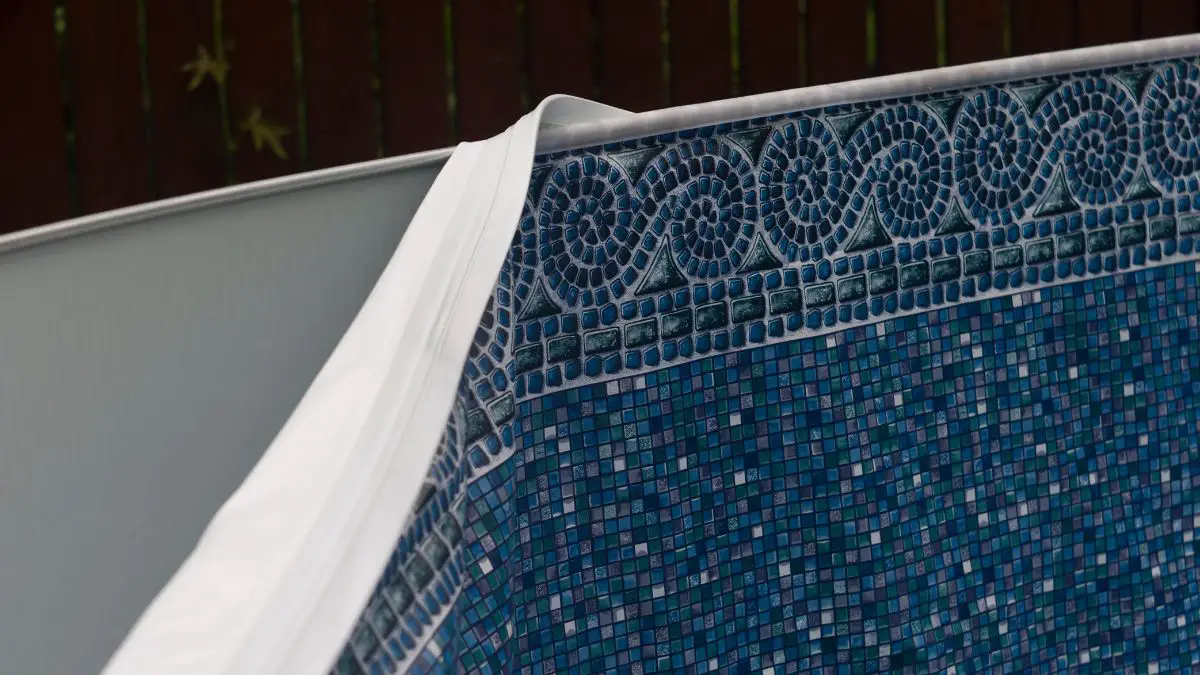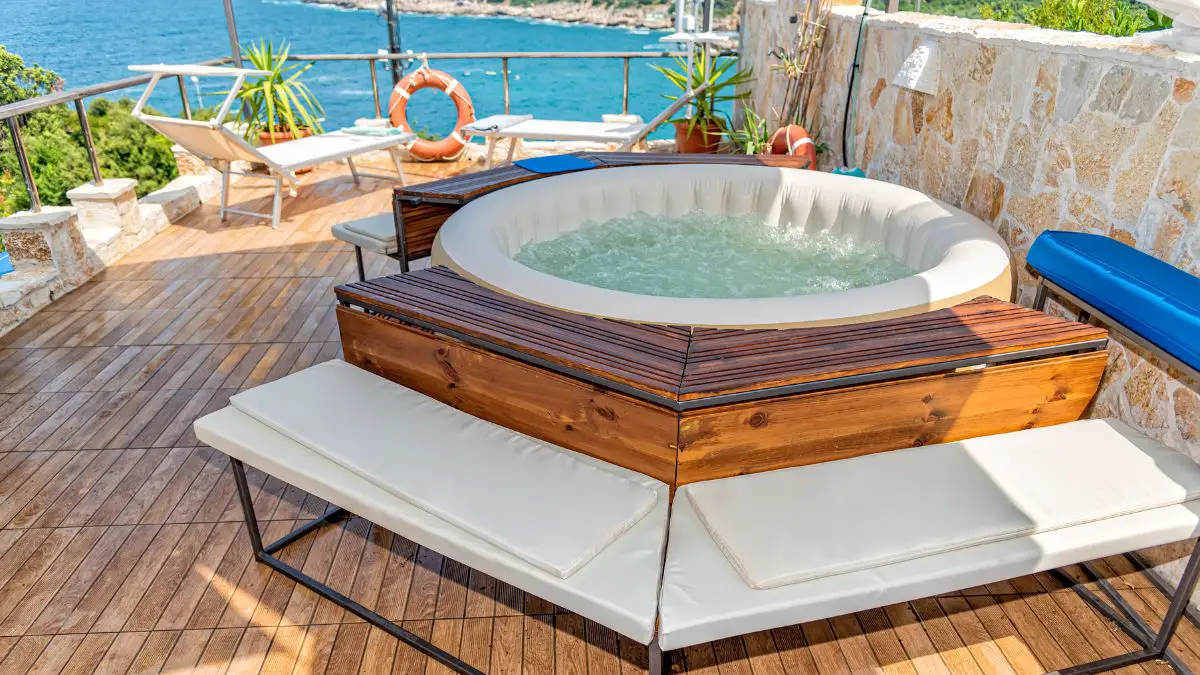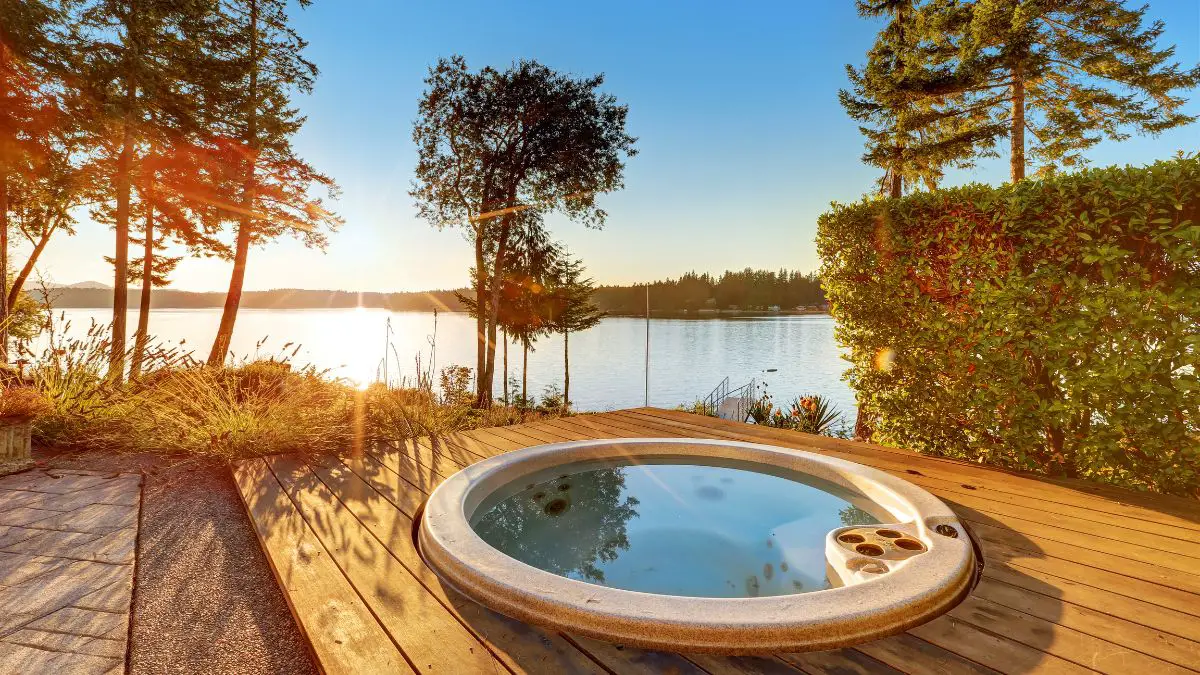Welcome to the world of pool maintenance! You might be asking, “Can any pool be a saltwater pool?” The answer is yes! Whether you have a compact pool in your backyard or a sprawling one at a community center, you can make the switch.
Well, your pool is more than just a body of water. It’s a place for relaxation, exercise, and creating memories with family and friends. The type of water in your pool – whether it’s chlorine or saltwater – can significantly impact these experiences.
Converting your pool to saltwater involves installing a salt chlorine generator, adding pool-grade salt, and balancing your pool water. This process can enhance your swimming experience by providing softer water, less skin and eye irritation, and lower maintenance needs.
Converting your chlorine pool to a saltwater pool can offer numerous benefits. It can lead to softer water, lower maintenance costs, and a more comfortable swimming experience. But, it’s not a decision to be taken lightly.
This guide about convert pool to saltwater will provide you with a comprehensive overview of the saltwater pool conversion process. It will help you understand the steps involved, the costs, and the maintenance required. So, let’s dive in and explore the world of saltwater pool benefits together.
| Key Takeaways |
|---|
| Converting to a saltwater pool involves installing a salt chlorine generator and adding salt to the pool. |
| Saltwater pools are gentler on the skin and eyes, require less daily maintenance, and can be more cost-effective in the long run. |
| The upfront costs of converting to a saltwater pool can be high, but the long-term savings can make it a worthwhile investment. |
| Regular testing and occasional chemical additions are still necessary to maintain balance in a saltwater pool. |
| The chemicals required for a saltwater pool are the same as those used in a chlorine pool. |
| Pool maintenance includes skimming, testing, cleaning the filter, skimmer, and pump, and checking the cell for buildup. |
| Choosing the appropriate salt type is crucial for maintaining a saltwater pool. Only pool-grade salt is appropriate. |
| The purity of the salt, indicated as a percentage on the product packaging, is an important factor when choosing pool salt. |
| An adequate amount of salt should be used for the pool’s volume to maintain a level between 2,700 ppm and 3,400 ppm. |
| Converting back to a chlorine pool is possible if a saltwater system isn’t right for you, but it can be time-consuming and costly. |
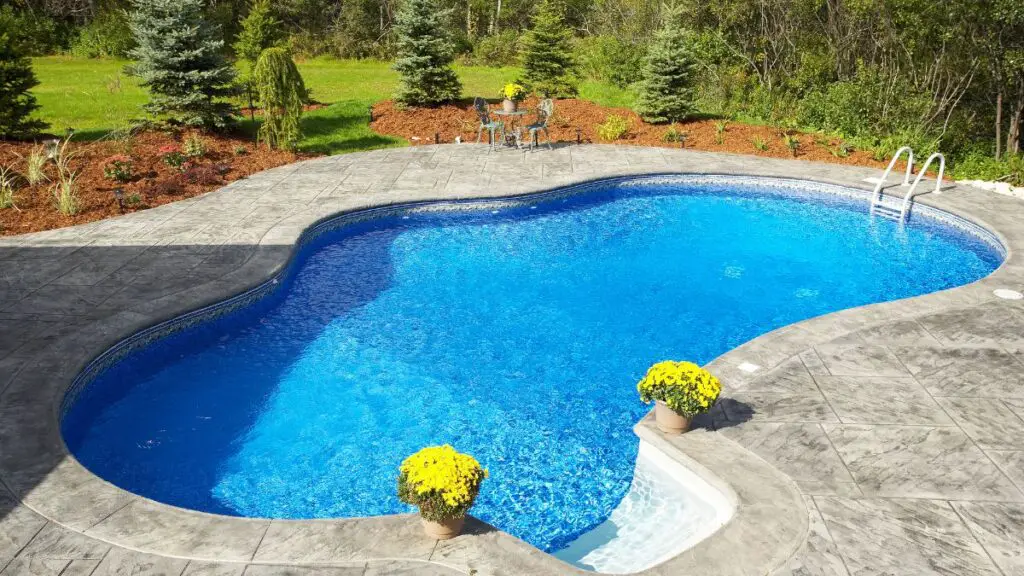
Understanding Saltwater Pools
What is a Saltwater Pool?
Imagine diving into a pool that feels soft and silky on your skin. You open your eyes underwater, and there’s no sting. You’re not swimming in the ocean, but it feels like it. You’re in a saltwater pool.
Unlike a traditional chlorine pool, a saltwater pool uses a salt chlorine generator. This device converts salt into chlorine, keeping your pool clean and sanitized. So, while it’s called a “saltwater pool,” it’s not just filled with saltwater. It’s a system that uses salt to produce its own chlorine.
How Does a Saltwater Pool Work?
Now, you might be wondering, “Can I make my pool saltwater?” and “How does a saltwater pool work?” The answer lies in the magic of a salt chlorine generator.
When you convert your pool to saltwater, you add a specific amount of salt to the pool water. The water, now containing dissolved salt, passes through the salt chlorine generator. Inside this device, a process called electrolysis takes place. The salt in the water breaks down into hydrogen and hypochlorous acid, the active sanitizer that kills algae and other harmful organisms in the pool.
This process is continuous. As long as the saltwater system is running, your pool is being sanitized. It’s a self-contained, self-sustaining system. The only time you need to add more salt is when water is splashed out, the pool is drained, or during heavy rainfall.
Why Do a Salt Water Pool Conversion?
Swimming in a chlorinated pool can sometimes be a harsh experience due to the presence of compounds known as chloramines. These chemical levels are formed when chlorine in your pool interacts with substances such as sweat and urine. Chloramines can be problematic in two significant ways.
Firstly, they are not as effective as chlorine in disinfecting the water, which can hinder the cleanliness of your pool. Secondly, they can cause irritation of eyes, skin irritation, and respiratory system. In indoor pools, where chloramines can accumulate in the surrounding air, they can even induce coughing or trigger asthma attacks.
Repeated exposure to chlorine can lead some individuals to develop an allergy or sensitivity to the harsh chemical. For those already sensitive, swimming in a chlorine pool might result in skin conditions like rashes, hives, and itchiness, beyond the typical dryness associated with chlorine exposure.
If you suffer from respiratory conditions such as asthma or allergic rhinitis, frequent swimming in a chlorine pool might exacerbate your symptoms. If this is the case, converting your pool to saltwater could be the relief you’ve been seeking.
On a lighter note, if you’re a blonde, you might have noticed your hair turning green after swimming in a chlorine pool. This unexpected color change is due to the reaction between chlorine and copper in the pool water, which can create a green film on your hair. Converting to a saltwater pool can reduce the chances of this happening.
If you’re experiencing this issue, it’s advisable to test your pool water for heavy metals. Copper in your pool water can often be traced back to the use of copper-based algaecides. If this is the case, consider switching to a non-copper alternative.
Benefits of a Saltwater Pool
Switching from a traditional chlorine pool to a saltwater pool comes with a host of benefits. Here are a few that might make you consider converting to a saltwater pool:
- Comfort: Saltwater pools are gentler on the skin and eyes. The water feels softer, and there’s less chance of experiencing itchy skin or red eyes after a swim.
- Maintenance: While you’ll still need to monitor your pool’s chemistry, a saltwater system does much of the sanitizing work for you. You won’t need to handle or store chlorine, which can be a significant safety benefit.
- Cost: The upfront cost of a salt chlorine generator can be high, but over time, you’ll likely save money. You won’t need to buy, transport, or store chlorine.
- Aesthetics: Many pool owners report that their saltwater pool feels more natural and less chemically than a traditional chlorine pool.

Comparing Chlorine Pools and Saltwater Pools
When it comes to swimming pools, you have two main options: traditional chlorine pools and saltwater pools. Each type has its own unique features, benefits, and drawbacks. Let’s dive into the differences and compare the pros and cons of each type.
Differences Between Chlorine and Saltwater Pools
The primary difference between a chlorine pool and a saltwater pool lies in the way they are sanitized.
In a chlorine pool, you manually add chlorine to the water to kill bacteria and other harmful organisms. This could be in the form of liquid chlorine, chlorine tablets, or sticks. The chlorine level in the pool needs to be regularly checked and adjusted to maintain a safe and clean swimming environment.
On the other hand, a saltwater pool uses a salt chlorine generator to convert salt into chlorine. The saltwater system continuously sanitizes the pool, reducing the need for manual chlorine addition.
Pros and Cons of Chlorine Pools
Pros
- Chlorine pools are generally cheaper to install than saltwater pools. The equipment needed for a chlorine pool is less expensive than a salt chlorine generator.
- When a chlorine pool gets dirty, you can “shock” it by adding a large amount of chlorine. This process is faster in a chlorine pool than in a saltwater pool.
Cons
- Chlorine pools require regular addition of chlorine, pH balancing, and frequent testing.
- You’ll need to handle and store chlorine, which can be hazardous.
- Chlorine can cause dry skin, hair damage, and eye irritation for some swimmers.
Pros and Cons of Saltwater Pools
Pros of Saltwater Pools
- Once you’ve set up your saltwater system, it requires less daily maintenance. The system continuously produces chlorine, so you don’t need to add chlorine manually.
- Saltwater pools are known for being more comfortable to swim in. The water is softer, and there’s less skin and eye irritation.
- With a saltwater pool, you won’t need to handle or store chlorine.
Cons of Saltwater Pools
- The upfront cost of installing a salt chlorine generator can be high.
- If a saltwater pool gets dirty and needs to be shocked, the process is slower than in a chlorine pool.
- Salt can cause corrosion on certain types of pool materials and pool equipment.
In conclusion, both chlorinated pool and saltwater pools have their own advantages and disadvantages. Your choice between the two will depend on your budget, maintenance preference, and personal comfort. Whether you decide to stick with a traditional chlorine pool or convert your pool to saltwater, the most important thing is that you enjoy your time in the water.

Getting Your Pool Ready for Conversion
Before you start the saltwater pool conversion process and install the chlorinator, you need to plan how to introduce the salt to the pool water.
To Drain or Not To Drain
The great news is that draining your pool isn’t necessary. However, if you’re currently using an antibacterial agent in your pool, it might be wise to drain it.
The active ingredient in these sanitizers, polyhexamethylene biguanide, doesn’t play well with chlorine. Since your saltwater pool will contain chlorine, any remaining agent can disrupt the water balance and reduce the effectiveness of the chlorine.
You have two choices here—either drain your pool and refill it with fresh water, or eliminate the antibacterial agent with a high dose of chlorine. This method will temporarily turn your pool water white and take a few days to clear. Once it does, you can start the conversion process.
Testing Your Pool Water
Before you start tweaking your pool water chemistry, you need to test for free chlorine, pH, cyanuric acid (stabilizer), alkalinity, calcium hardness, heavy metals, and salt. If adjustments are needed, make them in this order: chlorine, alkalinity, pH, stabilizer, calcium hardness, then metals.
The sequence is important because each adjustment can influence the other measurements. It’s also crucial to make these changes gradually, so factor this into your timeline for installing the chlorinator. Once your water is balanced, you’re ready to add salt to your pool.
Protecting Your Pool Liner
If your pool has a vinyl liner, you can use a salt chlorinator system without any additional precautions. The liner will be exposed to lower levels of chlorine, which might even prolong its lifespan.
However, many inground pools have galvanized walls behind the liner. If your liner develops a leak, even a small one, and saltwater seeps out against the steel wall, the wall could corrode over time.
Similarly, above-ground pools with many metal parts can rust over time due to exposure to saltwater. If you have a resin above-ground pool, you can make the switch without this worry.
Selecting a Chlorinator
A saltwater chlorination system works by passing an electrical current through saltwater, causing a chemical reaction via electrolysis that creates chlorine from salt molecules.
The two main components of a salt chlorinator are the cell and the control board: the cell is where electrolysis occurs to create chlorine; the control board lets you adjust the amount of chlorine generated.
When Choosing a Chlorinator, Consider the Following:
- Size – Choose the size based on your pool’s capacity in gallons. If you’re unsure about your pool’s capacity, use a pool calculator.
- Price – Opt for a chlorinator that fits your budget but is of the best quality you can afford. Chlorinator prices range from a few hundred to a thousand dollars. Cheaper doesn’t always mean worse, but consider lifespan and replacement costs in your search.
- Features – Pick a system that offers the features you need based on your location and how much automation you want. Basic chlorinators let you adjust the amount of chlorine they produce. More advanced systems offer digital readouts, salt levels, automatic cell cleaning, flow control, and freeze protections, among other things.
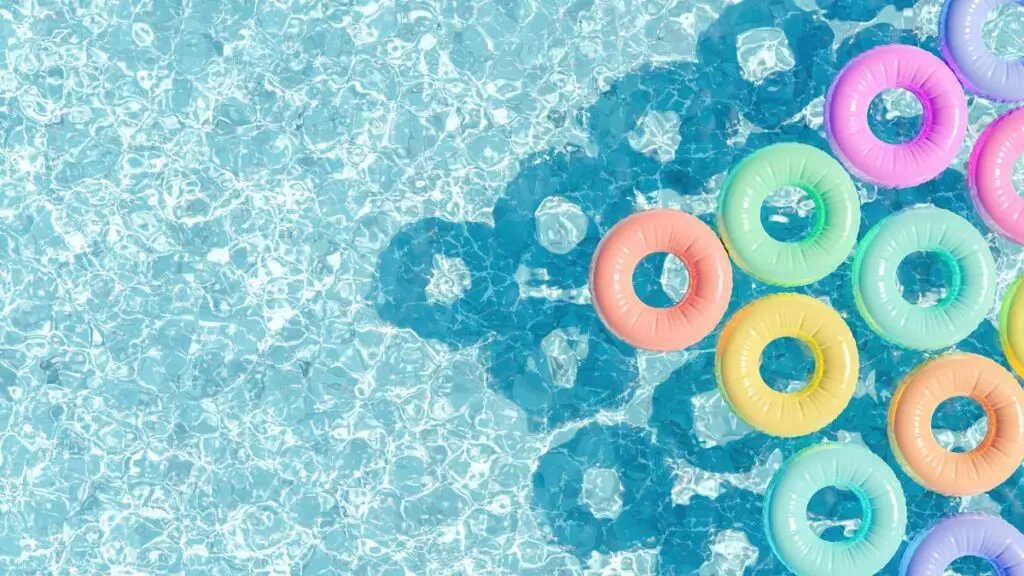
Steps to Convert a Chlorine Pool to a Saltwater Pool
You’ve weighed the pros and cons, and you’ve decided to convert your pool to saltwater. Congratulations on making a decision that will enhance your swimming experience! Now, let’s walk through the step guide involved in the simple process.
Step 1: Testing and Balancing the Pool Water
Before you begin the conversion process, it’s essential to test and balance your pool water. This step ensures that your pool is in the best possible condition for the conversion.
Start by testing the pH, alkalinity, and calcium hardness levels. You want to aim for a pH level between 7.2 and 7.8, an alkalinity level between 80 and 120 ppm, and a calcium hardness level between 200 and 400 ppm.
Balancing your pool water might seem like a small step, but it’s crucial for the success of your saltwater pool conversion.
Step 2: Draining the Pool
The next step in converting your chlorinated water pool to a saltwater pool is to drain the pool. This step is necessary to remove the high concentration of chlorine commonly found in traditional pools.
Remember to follow local regulations when draining your pool. In some areas, you may need to dechlorinate the water before draining it into storm drains or other outlets.
Step 3: Installing the Salt Chlorine Generator
Now comes the exciting part: installing the salt chlorine generator. This device is the heart of your saltwater pool system. It’s what converts the salt into chlorine and keeps your pool clean and sanitized.
Installation processes can vary depending on the brand and model of your salt chlorine generator. Always follow the manufacturer’s instructions for the best results.
Step 4: Adding Salt
With the salt chlorine generator installed, it’s time to add salt to your pool. The amount of salt you’ll need depends on the size of your pool.
As a general rule, you’ll need about 50 pounds of pool-grade salt for every 2,000 gallons of water. But always check the manufacturer’s instructions for the specific salt level needed for your system.
Once you’ve added the salt, use a pool brush to help the dissolving process. It can take up to 24 hours for all the salt to dissolve completely.
Step 5: Final Adjustments and Maintenance
After the salt has dissolved, turn on your salt chlorine generator. It’s time to start producing chlorine!
For the first few days after converting to a saltwater pool, you’ll need to test your pool fresh water daily. You’re checking for the correct salt level, pH, and chlorine level. You may need to make some adjustments to get everything just right.
Once everything is balanced, you can settle into a regular maintenance routine. This typically involves testing the volume of water weekly and cleaning the salt chlorine generator cell every few months.
Converting a pool to saltwater is a process, but it’s one that can lead to a more enjoyable and lower-maintenance swimming experience. So, take the plunge and enjoy the benefits of your new saltwater pool!

Costs Involved in the Conversion
When you decide to convert your pool to saltwater, it’s essential to understand the costs involved. This understanding will help you budget for the conversion and set realistic expectations about the ongoing costs.
Breakdown of Costs
The primary cost in converting a pool to saltwater is the salt chlorine generator. The price of this device can vary widely depending on the brand, model, and the size of your pool. On average, you can expect to pay between $500 and $2,500 for a salt chlorine generator.
Installation costs are another factor to consider. If you’re handy, you might be able to install the salt chlorine generator yourself. But if you’re not comfortable with DIY projects, you’ll need to hire a professional. Installation costs can range from $200 to $500.
You’ll also need to purchase salt for your pool. The amount of salt you’ll need depends on the size of your pool, but you can expect to pay around $5 to $10 per 40-pound bag of pool-grade salt.
Finally, there may be additional costs for testing kits and any adjustments needed to balance your pool water.
Long-Term Cost Comparison Between Saltwater and Chlorine Pools
While the upfront cost of a saltwater pool can be higher than maintaining a traditional chlorine pool, the long-term costs can be lower.
With a chlorine pool, you’ll need to regularly purchase chlorine. The cost of chlorine can add up over time, especially during peak swimming season when you’re using your pool frequently.
On the other hand, once your saltwater system is up and running, the ongoing costs are relatively low. You’ll need to replace the salt occasionally, but this is generally less expensive than buying chlorine.
Additionally, the salt cell in your salt chlorine generator will need to be replaced every 3 to 7 years, depending on usage and maintenance. This can be a significant expense, but it’s an infrequent one.
In conclusion, while the upfront costs of converting to a saltwater pool can be high, the long-term savings can make it a cost-effective choice. It’s an investment in a more comfortable and lower-maintenance swimming experience. And for many pool owners, that’s a price worth paying.
Living with a Saltwater Pool
Now that you’ve successfully converted your pool to saltwater, what does maintenance look like? While your saltwater chlorination system generates chlorine from salt, it doesn’t balance your water. Regular testing and occasional chemical additions are still necessary to maintain balance.
The chemicals required are the same as those used in a chlorine pool. However, you’ll find that your pool no longer demands large quantities of maintenance chlorine for sanitization.
Testing and Cleaning
To maintain clear water and prolong the life of your chlorinator cell, follow these simple steps:
- Skim your pool to remove debris daily or as often as possible.
- Conduct weekly tests for free chlorine and pH levels.
- Inspect and clean your filter, skimmer, and saltwater pool pump on a weekly basis.
- Monthly, test for alkalinity, calcium hardness, cyanuric acid, metals, total dissolved solids, and salt levels.
- Scrub the sides of your pool and vacuum at least once a month.
- Every three months, check your cell for buildup and clean it with hydrochloric acid as needed.
Selecting the Right Salt
Choosing the appropriate salt type is crucial for maintaining your new saltwater swimming pool. Just as you wouldn’t use rock salt for your dinner, table salt is not suitable for your pool. Only pool-grade salt is appropriate.
The most important factor when choosing pool salt is the level of impurities, such as minerals and metals. If you add impure pounds of salt to your pool water, you’ll end up spending time and money combating imbalances, metals, or calcium carbonate buildup.
The purity of the salt is typically indicated as a percentage on the product packaging. Opt for a high-quality, pool-grade salt to avoid potential issues. Also, ensure you’re using an adequate amount of salt for your pool’s volume to maintain a level between 2,700 ppm and 3,400 ppm, with the ideal level being 3,200 ppm.
Frequently Asked Questions About Convert Pool To Saltwater
As you consider converting your pool to saltwater, you might have a few questions. Here are some of the most common queries about the saltwater pool conversion process:
Can Any Pool Be Converted Into a Saltwater Pool?
Yes, virtually any pool can be converted into a saltwater pool. Whether you have an above-ground or in-ground pool, made of fiberglass, concrete, or vinyl, you can make the switch. The key component is the salt chlorine generator, which can be added to your existing pool system.
How Long Does the Conversion Process Take?
The time it takes to convert a pool to saltwater can vary depending on several factors, including the size of your pool and whether you’re doing the work yourself or hiring a professional. On average, you can expect the process to take a few days. This includes time to balance the water, install the salt chlorine generator, add the salt, and allow it to dissolve fully.
Is It Possible to Convert Back to a Chlorine Pool?
Yes, it’s possible to convert back to a chlorine pool if you decide that a saltwater system isn’t right for you. The process involves removing the salt chlorine generator and adjusting your pool maintenance to a traditional chlorine system. However, keep in mind that switching back and forth between systems can be time-consuming and costly.
Remember, the goal is to create a pool environment that you love. Whether that’s a traditional chlorine pool or a saltwater pool, the choice is yours. Enjoy the process and happy swimming!
Conclusion
You’ve embarked on a journey to understand the process of converting a pool to saltwater. You’ve learned about the differences between chlorine and saltwater pools, the steps involved in the conversion process, and the costs associated with it.
You’ve discovered that saltwater pools offer a unique blend of comfort and convenience. They’re gentler on the skin and eyes, require less daily maintenance, and can be more cost-effective in the long run.
You’ve also learned that the conversion process involves testing and balancing the pool water, draining the pool, installing a salt chlorine generator, adding salt, and making final adjustments.
And you’ve found out that while the upfront costs of converting to a saltwater pool can be high, the long-term savings can make it a worthwhile investment.
In the end, the decision to convert your pool to saltwater is a personal one. It depends on your budget, your maintenance preferences, and your desire for a certain kind of pleasant experience.
Remember, your pool is more than just a body of water. It’s a place for relaxation, exercise, and making memories. So, whether you choose a chlorine pool or a saltwater pool, make sure it’s a choice that brings you joy. Happy swimming!



